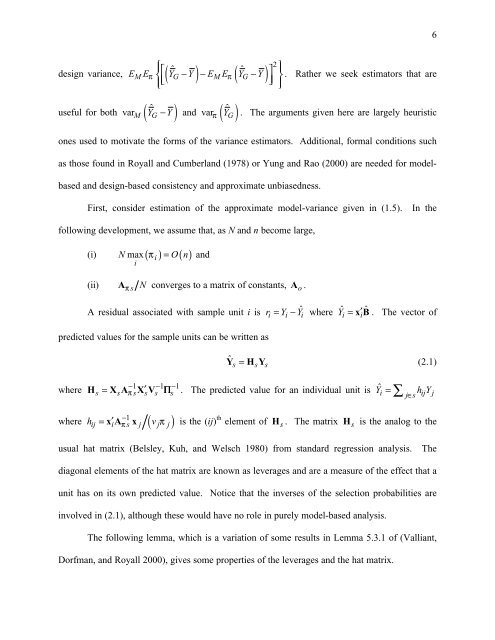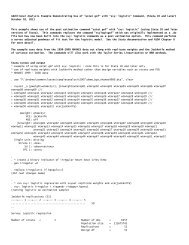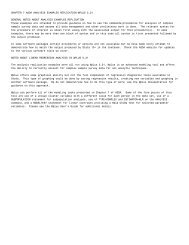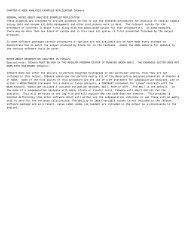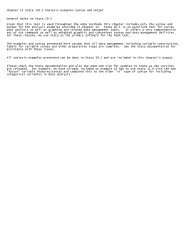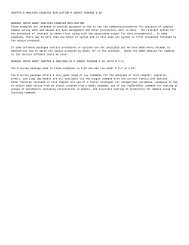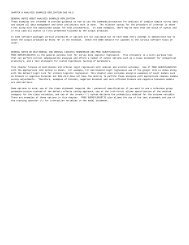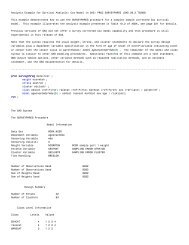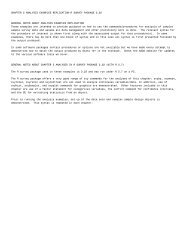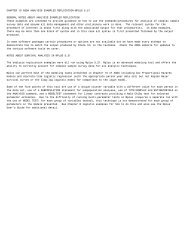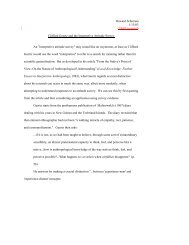Variance Estimation for the General Regression Estimator
Variance Estimation for the General Regression Estimator
Variance Estimation for the General Regression Estimator
Create successful ePaper yourself
Turn your PDF publications into a flip-book with our unique Google optimized e-Paper software.
6<br />
⎧<br />
⎨<br />
⎪<br />
⎢<br />
⎩⎣<br />
⎪<br />
design variance,<br />
ˆ<br />
ˆ<br />
( ) ( ) 2<br />
E E ⎡ Y Y E E Y Y ⎤<br />
− − −<br />
M π G M π G<br />
useful <strong>for</strong> both var<br />
ˆ<br />
M ( Y G − Y)<br />
and var<br />
ˆ<br />
π ( Y G)<br />
⎥⎦<br />
⎫⎪<br />
⎬. Ra<strong>the</strong>r we seek estimators that are<br />
⎪⎭<br />
. The arguments given here are largely heuristic<br />
ones used to motivate <strong>the</strong> <strong>for</strong>ms of <strong>the</strong> variance estimators. Additional, <strong>for</strong>mal conditions such<br />
as those found in Royall and Cumberland (1978) or Yung and Rao (2000) are needed <strong>for</strong> modelbased<br />
and design-based consistency and approximate unbiasedness.<br />
First, consider estimation of <strong>the</strong> approximate model-variance given in (1.5). In <strong>the</strong><br />
following development, we assume that, as N and n become large,<br />
(i) Nmax( ) O( n)<br />
i<br />
π = and<br />
i<br />
(ii) A πs N converges to a matrix of constants, A o.<br />
A residual associated with sample unit i is<br />
r = Y − Yˆ<br />
where Y ˆ =xB. ′ ˆ The vector of<br />
i i i<br />
i<br />
i<br />
predicted values <strong>for</strong> <strong>the</strong> sample units can be written as<br />
Yˆs = HY s s<br />
(2.1)<br />
where<br />
1 1 1<br />
s = s π − s ′ s s − s<br />
−<br />
=∑ ∈<br />
H XA XV Π . The predicted value <strong>for</strong> an individual unit is Y ˆi hY ij j<br />
j s<br />
1<br />
where hij ′<br />
−<br />
i πs j ( vjπ<br />
j)<br />
=xA x is <strong>the</strong> (ij) th element of H s. The matrix<br />
H s is <strong>the</strong> analog to <strong>the</strong><br />
usual hat matrix (Belsley, Kuh, and Welsch 1980) from standard regression analysis. The<br />
diagonal elements of <strong>the</strong> hat matrix are known as leverages and are a measure of <strong>the</strong> effect that a<br />
unit has on its own predicted value. Notice that <strong>the</strong> inverses of <strong>the</strong> selection probabilities are<br />
involved in (2.1), although <strong>the</strong>se would have no role in purely model-based analysis.<br />
The following lemma, which is a variation of some results in Lemma 5.3.1 of (Valliant,<br />
Dorfman, and Royall 2000), gives some properties of <strong>the</strong> leverages and <strong>the</strong> hat matrix.


